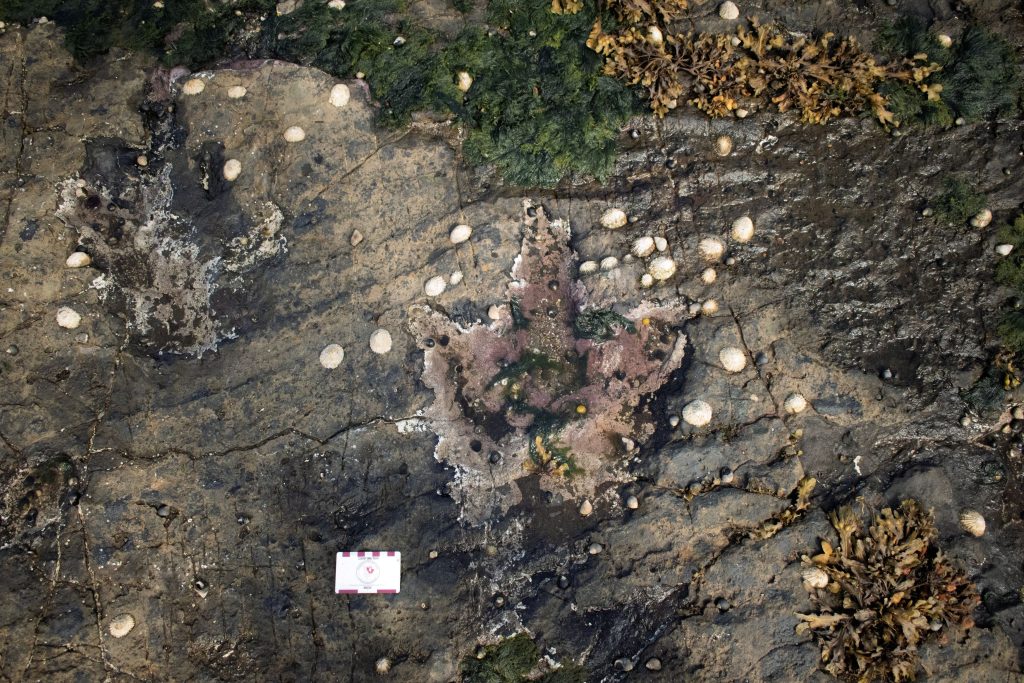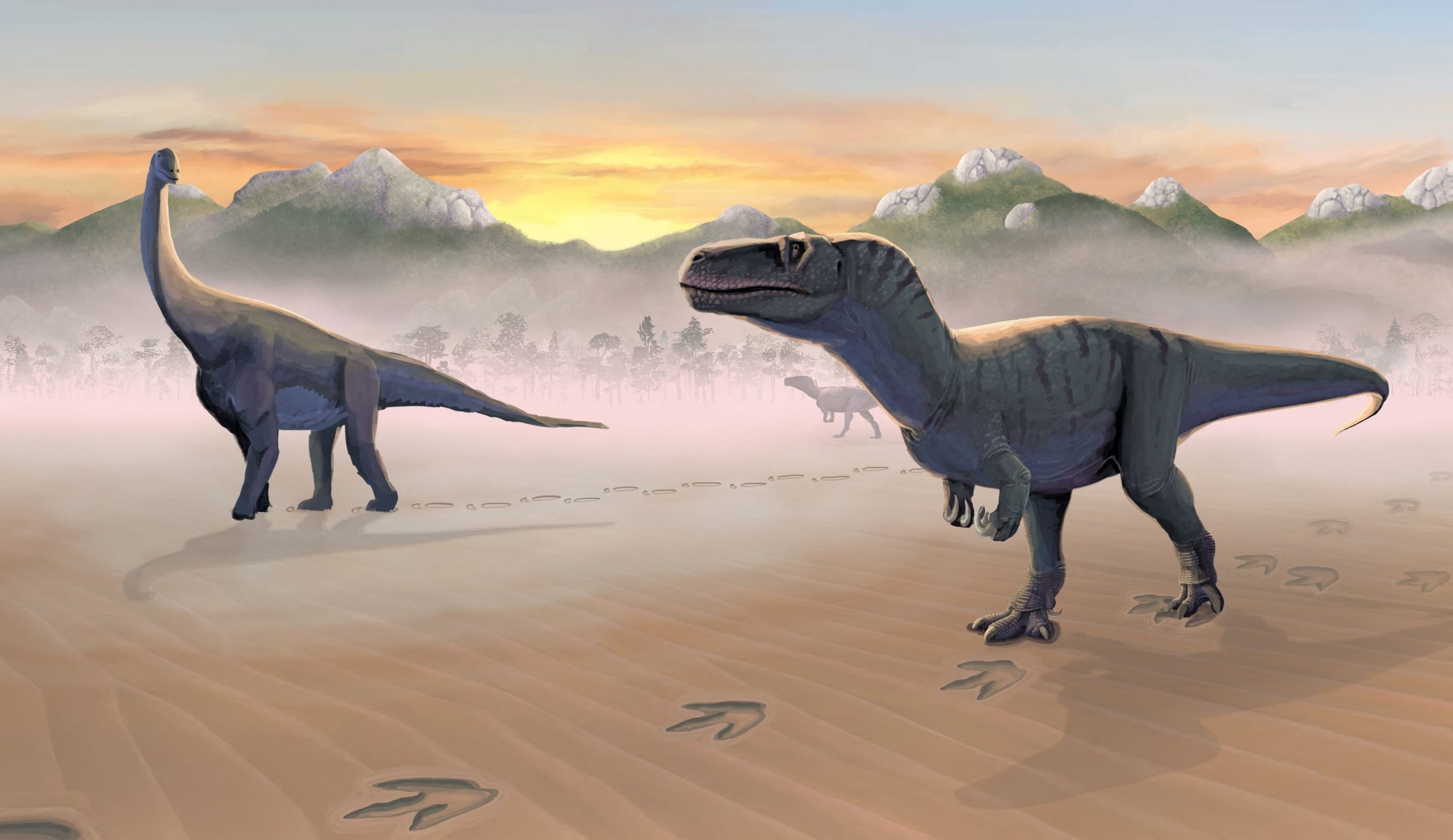The Isle of Skye, known for its dramatic landscapes and deep historical roots, has revealed a remarkable new chapter in its prehistoric past. Researchers have uncovered 131 fossilized dinosaur footprints along the island’s rocky shoreline, providing a vivid snapshot of life on Earth approximately 167 million years ago during the Middle Jurassic period.
Often referred to as “Dinosaur Isle,” Skye earned its nickname after the 1992 discovery of a partial right tibia belonging to a Ceratosaurus near the town of Heaste. Since then, the island has become a hub of paleontological significance.
In February 2024, the island yielded another significant discovery: the fossil remains of a flying reptile, a close relative of the dinosaurs, found on a beach. Since then, both locals and tourists have been on the lookout for more signs of ancient life buried within Skye’s rugged shores.

A pair of fossilized footprints left by meat-eating dinosaurs from the dinosaur family called megalosaurs are seen at Prince Charles Point on the Isle of Skye, Scotland, in this undated photo released on April 2, 2025. Paige E. de Polo/Handout via REUTERS THIS IMAGE HAS BEEN SUPPLIED BY A THIRD PARTY NO RESALES. NO ARCHIVES
The newly discovered tracks—left by both meat-eating theropods and plant-eating sauropods—were found at a site steeped in Scottish history, once used as a hiding place for Bonnie Prince Charlie in 1746, according to Reuters.
The theropod tracks, measuring about 18 inches long, exhibit three prominent toes with sharp claws, while the sauropod prints are rounder, roughly 20 inches in diameter, and sometimes preserve the impression of short, stubby toes.
Using drone technology, scientists created detailed digital models of the trackways, which revealed that these ancient creatures shared a subtropical lagoon environment in apparent harmony.
“It’s very much a tranquil snapshot of dinosaurs gathering, perhaps to drink or move between vegetated areas,” a paleontology graduate student from the University of Edinburgh told Reuters. The discovery supports the idea that carnivores and herbivores may have coexisted peacefully at shared watering holes, much like modern wildlife today.
The Isle of Skye contains more than 10% of the world’s known Middle Jurassic dinosaur species, making it a critical site for understanding this relatively underrepresented era in dinosaur evolution.



